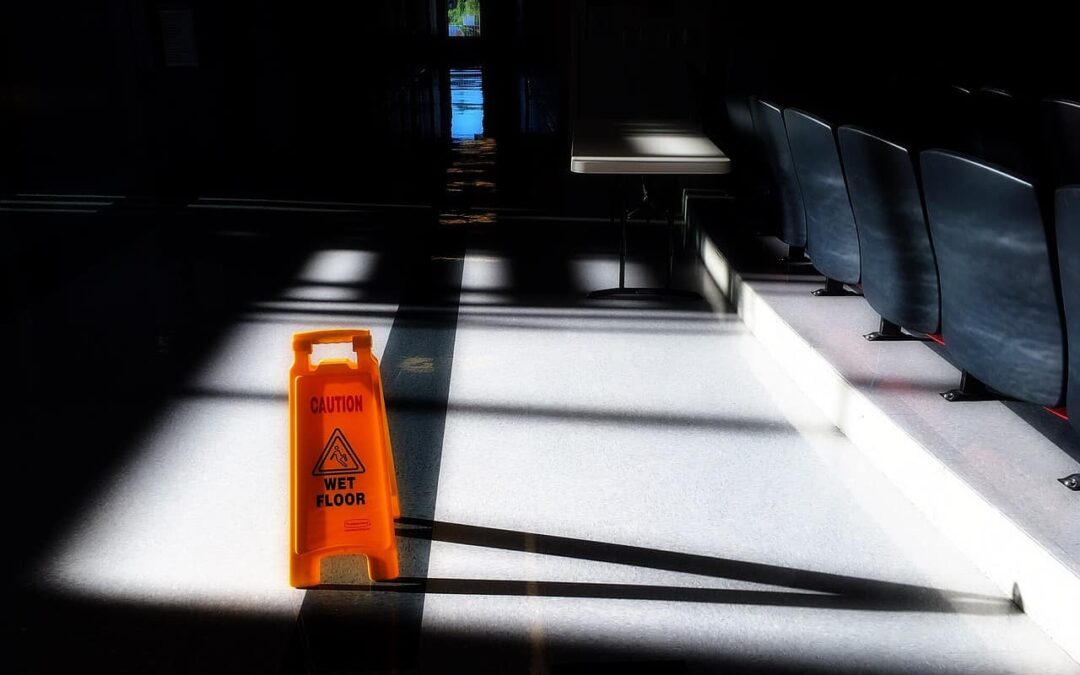Your most important asset is underfoot.
My grandmother was a salty lady. As a child, every time I came through the front door, she would yell, “Take off your shoes!” It wouldn’t be uncommon for that command to be heavily peppered with some expletives either. Mamaw meant what she said and you obeyed. But she knew something important: floor care is paramount.
The repercussions of dirty floors can be brutal. It can impact your business’ brand image, the health of your employees, the structural integrity of your building, and so much more. Floor care is crucial to the success of your facility and yet they’re often overlooked and under-cared for.
First Impressions Start From the Bottom
We tend to take our floors for granted. Much like driving home after a long day at work, we’ve become so familiar with the route that our internal autopilot switches on. But that’s how accidents happen. Lack of awareness is not only dangerous on the roadway but in our facilities as well.
When we become comfortable with our surroundings, we tend to look at our feet less and less, and as such, the floors in our facility become the last thing we think about. However, it’s the first thing visitors see. Potential clients, investors, new employees, and everyone in-between are measuring every step and taking in what’s beneath them.
Your floors should be a showcase. Much like what we covered in our content on restroom cleanliness (read: Three Ways to Keep Your Restrooms Clean), floors should be telling a story of what the entirety of a building looks like. If the lobby floor is disgusting, your visitor is going to fill in the gaps regardless if your offices are pristine.
Impress upon your cleaning crew the importance of floor care in the visitor areas. Thresholds, walk-off mats, entryways, lobby areas, and guest restrooms must become a priority in your facility. You could be losing money from first impressions. Don’t let autopilot wreck you. Constantly scan your surroundings and teach your team to do the same.
The Importance of Clean Carpet
If your facility has a large amount of carpet, there are unseen enemies most likely affecting the livelihoods of your staff and patrons. If you are content with only the aesthetic piece of carpet and floor care, then you are putting your staff and those that visit your facility at risk. Alongside vacuuming and general upkeep, you must also have an intense deep cleaning method in place.
A study conducted by the University of Arizona found that:
- 93% of all shoes contain fecal bacteria.
- 78% of carpet contain dangerously high levels of bacteria such as Salmonella, Campylobacter, Listeria and Shigella.
- 84% of Americans say that clean carpets are a necessity while only 55% of U.S. facilities deep clean their carpets more than once a year.
The truth is that carpet can act as a reservoir not only for bacteria but for dust, dirt, pollen, mold spores, pesticides and a multitude of other things. Inadequate maintenance can allow large quantities of these materials to build up in the carpet which can release significant quantities of these particles into the air during the course of daily activity.
To combat sickness and improve the health of your patrons and staff, we recommend deep cleaning your carpets quarterly. Instituting a carpet cleaning regimen in-house or with a trusted carpet care provider every 3 months will improve the air quality and health of your employees, all while giving you the benefit of more lush and vibrant carpet.
If you want to learn more, the EPA has some additional information on the correlation of carpet and indoor air quality at www.epa.gov/iaq.
Protecting Your Floors
Vinyl Composite Tile (VCT) decorates the aisles of almost every grocery and department store in North America. Chances are, it’s used fairly heavily in your facility as well. They’re a wonderful, durable material that can make a huge impact on the cleanliness and health of your facility. However, if you aren’t protecting your VCT from the get-go, you’re setting yourself up for failure.
To the naked eye, VCT flooring appears to be smooth and relatively hard. Appearances, however, can be deceiving. In fact, VCT is not hard and the smooth-looking surface is really uneven and porous. Without proper care, the tiles collect debris and bacteria in the same way as carpet. Even further, if neglected, VCT will deteriorate and cause even further foundational issues that you may not have anticipated.
To protect your facility, it’s important to institute an annual strip and wax cycle. Waxing your floors not only gives a pleasing shine but also increases durability, protects the foundational integrity of your building, decreases bacteria-related illnesses, and makes floor care easier and more effective for your cleaning teams.
Floors are the very foundation on which the rest of a building stands. As such, floor care should be a priority instead of an afterthought. When it comes to facility maintenance, grandma’s solution of asking your employees and patrons to take off their shoes isn’t going to fly.
Instead, we can take measures to increase our awareness, deep clean our carpets, and protect our hard surface floors. By starting with floor care, you will create a strong foundation on which your janitorial program can stand.

Trackbacks/Pingbacks